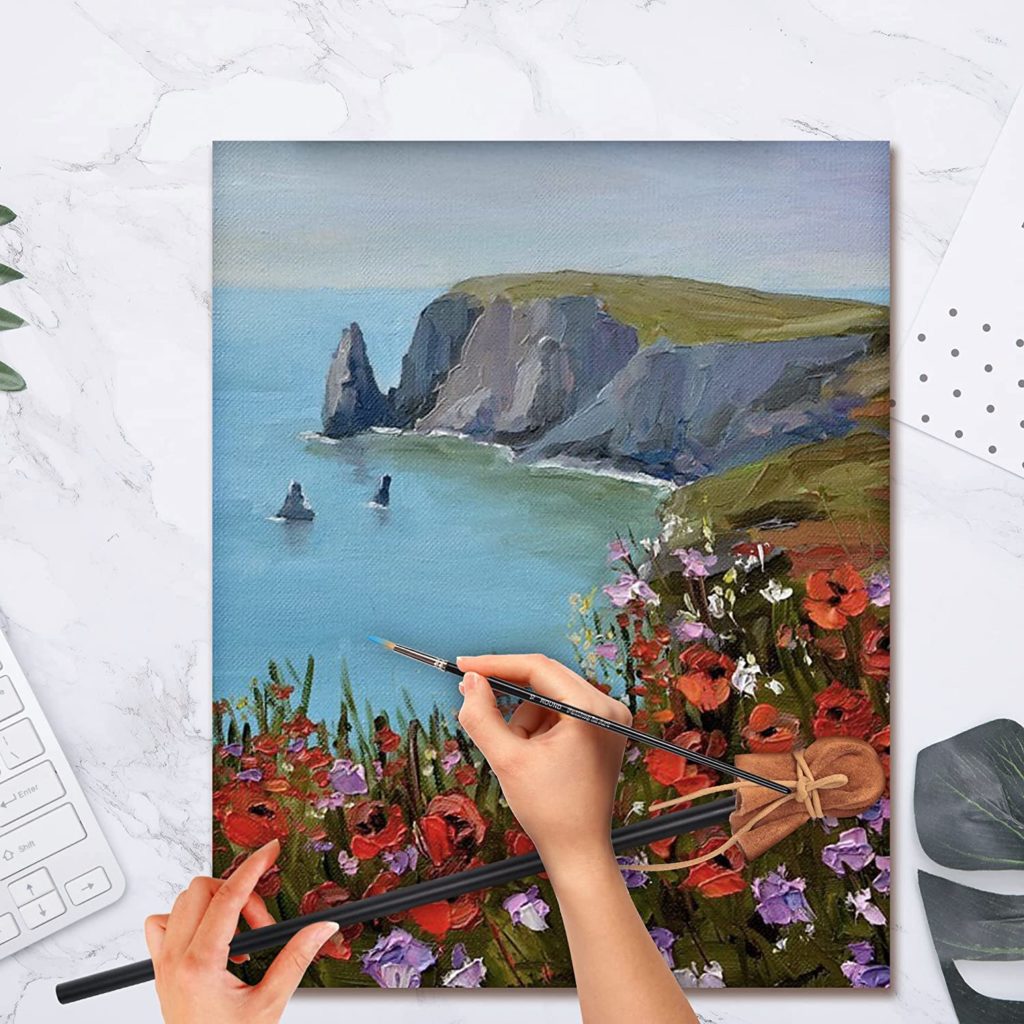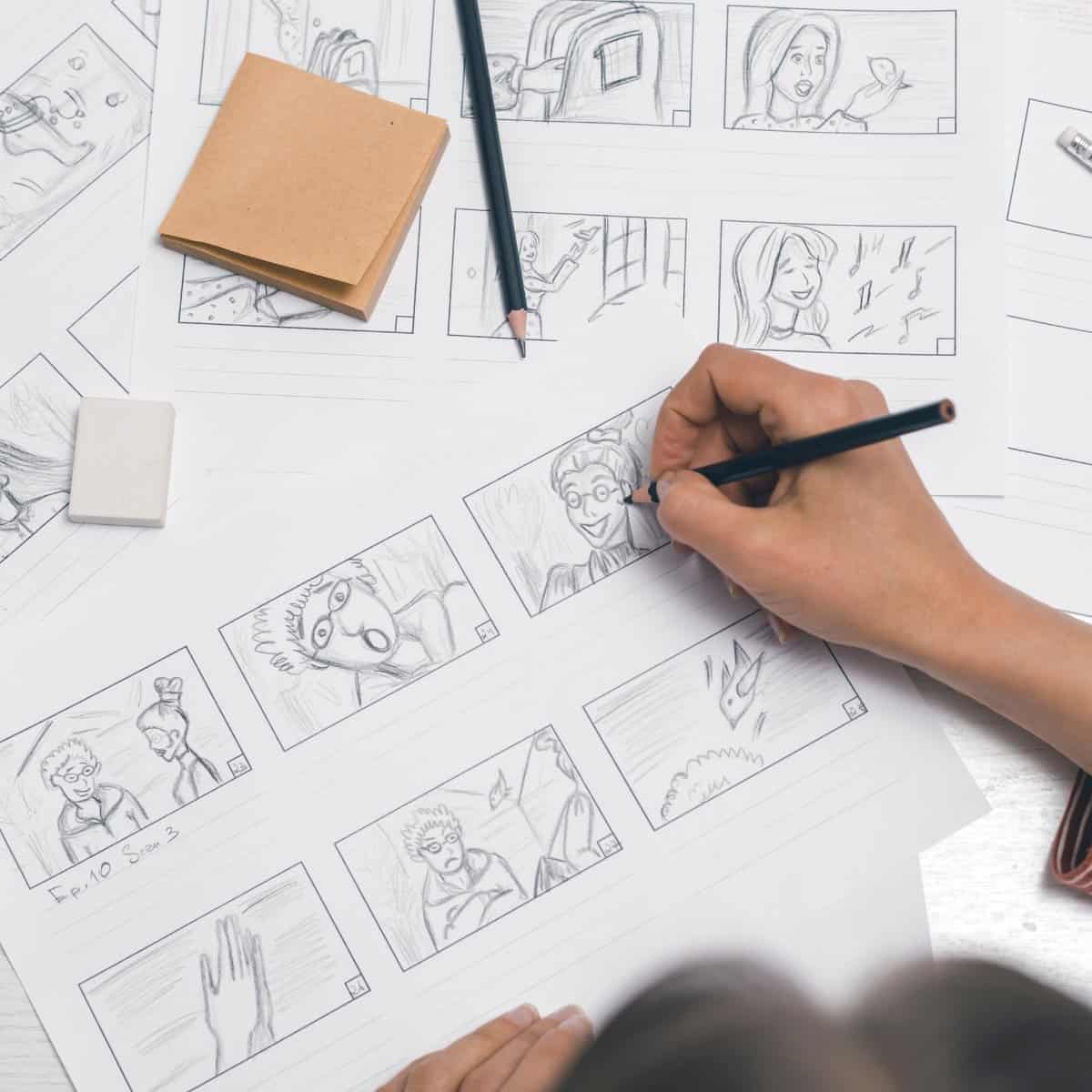How do you make a stop motion smoother? 12 pro tips & techniques
Have you created your own stop motion animation only to find that it’s a little jerky and not as smooth as you’d like?
As you’re learning your stop motion animation video won’t look like the Wallace and Gromit film and that’s fine!
But, you don’t want your final product to look like a child’s crude drawings come to life either – there are ways to make your stop motion animation smoother.

So, there’s no need to panic, there are a few things you can do to fix jerky stop motion. With a little bit of work and some practice, you can make your animation smoother.
The best way to make your stop motion animation smoother is to use smaller incremental movements and also take more shots per second. This means that each frame will have less motion and when you play it back, it will look smoother. The more frames, the smoother it will look.
There are several ways to improve your technique and you can also use software to help you create a smoother animation.
There are many different stop motion animation programs available and they can make the stop motion video look professional.
Keep reading to find out more!
In this post we'll cover:
- 1 Ways to make a stop motion smoother
- 1.1 Smaller incremental movements
- 1.2 Ease in and ease out
- 1.3 Squash and stretch
- 1.4 Adding anticipation
- 1.5 Softening movement with arcs
- 1.6 Using the object’s center of mass
- 1.7 Using a mahl stick
- 1.8 Rest your hands
- 1.9 Using software
- 1.10 Adding effects in post-production
- 1.11 Using different techniques: interpolation
- 1.12 Lighting
- 2 Takeaway
Ways to make a stop motion smoother
Stop motion animation can look a bit choppy or jittery, especially if you’re new to the technique.
Just go to YouTube these days and you’ll see plenty of choppy stop motion animations that lack the smoothness of professional animations.
Getting started with your own stop motion storyboards
Subscribe to our newsletter and get your free download with three storyboards. Get started with bringing your stories alive!
We'll only use your email address for our newsletter and respect your privacy
One reason why people struggle is that they don’t take enough images so they lack the necessary frames.
But the jerky video detracts from the enjoyment of seeing the animation and following the tale.
Making your stop motion smoother is really simple.
Spending a little more time and attention will provide results that will not only satisfy you but will also make the animation more appealing to watch for your audience.
A smooth stop motion animation will draw in more viewers and fans.
So, how do you create a fluid stop motion animation?
Smaller incremental movements
The solution is straightforward make smaller incremental movements and take more snapshots per second. This results in more frames per second and less motion in each frame.
It may take a little longer to shoot the scene but it will be worth it when you see the final results.
Professional stop motion animators use this technique all the time and it’s one of the reasons why their animations look so smooth.
The frame rate is the number of frames (or images) that are shown per second in an animation.
The higher the frame rate, the smoother the animation will look. For stop motion animation, a frame rate of 12-24 frames per second is typically used.
This may seem like a lot but it’s necessary to create a smooth animation.
If you’re new to stop motion, start with a lower frame rate and then increase it as you become more comfortable with the technique.
You can always shoot extra frames and then delete the ones you don’t need later in the editing process.
The more photos the better, especially if it’s not your first animation and you know what you’re doing.
Find out what the best camera’s to make stop motion films are
Does a higher frame rate equal smoother animation?
Here’s a tricky thing to think about.
Just because you have more frames per second, doesn’t necessarily mean your animation will be smoother.
It probably will, but you have to take into account the distance between frames.
Pacing frames is very important and can throw the notion of more frames = smoother motions up in the air.
If you’re trying to create a smoother waving motion (let’s pretend your Lego figure is waving), you can actually use fewer frames that are spread out further apart to create a smooth action.
If you use more frames spaced closely, you can end up with a choppier wave.
The same goes for other motions such as a character walking, running, or riding a bike.
The point is that you have to experiment with pacing your frames. It’s still best to have plenty of frames you can use though overall.
Also read: What equipment do you need for stop motion animation?
Ease in and ease out
Another crucial part of developing smoothness is to follow the “Ease in and Ease out” principle.
The ease in refers to slow in or starting the animation slowly and then accelerating. So, the frames are grouped closer together at the start and then farther apart afterward.
Ease out is when the stop motion starts quickly but then slows out or decelerates.
This means that when an object is moving, it speeds up as it starts to move and then slows down as it’s about to stop.
To summarize, you give your puppet/object more frames at both the start and end of the motion. Thus, your movement on-screen will be slow, fast, slow.
The trick to making smoother stop motion is about controlling the tiny increments during ease in and ease out.
If you’re making clay animation, for example, you can make the clay puppet appear to move smoothly using tinier increments.
You can make your frames as short or as long as you want but the shorter the interval, the smoother it will look.
If you look at a character from Wallace and Gromit, you’ll notice that the hand or foot movements are controlled, not sudden jolts.
This is what gives the animation a natural and lifelike appearance. This is a result of the animator’s focus on the ‘ease in & ease out’ process.
Check out this video to see how to control your movements to make smooth stop motion videos:
Squash and stretch
Does your animation look too rigid?
You can use the squash and stretch method to add smoothness.
An object can appear flexible and alive by being squeezed and stretched while it moves.
Additionally, it might inform the viewer about the object’s hardness or softness (softer objects should squash and stretch more).
If your animations appear to be overly rigid, consider adding squash and stretch to the movement to see if it helps. You can do this when you edit your video.
Adding anticipation
A movement doesn’t just happen out of nowhere. The concept of anticipation in stop motion animation is essential to make it look smooth.
For example, if you want your character to jump, you have to show them bending their knees first in order to gain the energy to make the jump.
This is called the principle of opposites and it helps sell the action on-screen.
Basically, anticipation is a preparatory movement that smoothens out the action between character moves.
Softening movement with arcs
Sure, some moves are linear but almost nothing in nature goes in a straight line.
If you wave your hand or move your arm, you’ll notice that there is an arc to the movement, even if it is slight.
Try softening the movement’s route with some arcs if you think your animations aren’t looking quite right. It can diminish the appearance of choppy moves on screen.
Using the object’s center of mass
When you move your puppet or object, move it based on where its center of mass is located. This will make the movement look more natural and smooth.
Pushing through the center of mass gives you more control over the movement.
If you move the puppet from the side or corner, for example, it will look like it’s being pulled or pushed instead of moving on its own.
It can also appear to spin which will make the animation unsteady.
It’s also recommended that you always push your objects in the exact same spot -this creates smooth animations.
You can use a small piece of double-sided tape or a post-it note as a marker to help you find the center of mass more easily.
Using a mahl stick
Have you heard of a mahl stick? It’s a stick used by painters to rest their hands while they’re working without smudging any of the paint.

It’s also very useful for stop motion animation because it gives you more control over your movements.
When you’re moving your puppet around, hold the mahl stick in your other hand and rest the end of it on the table.
This will give you more stability and help you make smoother movements.
Also, this mahl stick can help you achieve smooth stop motion because you can make extremely small movements by reaching the small spaces without moving your objects unintentionally.
A mahl stick also helps you make only steady movements.
Rest your hands
The more stable your hand is, the smoother your stop motion animation will be.
You need to keep your hand steady as you take the images one frame at a time. But, your hand must also be steady when you move your objects and puppets in small increments.
Since you need to move your figure for each scene, your hand and fingers should be steady if you want a smooth final result.
If your hand is in the air, it moves more than if it’s resting on a solid surface. So, it’s best to rest your hand or fingers on something while you work.
Use a tripod (we’ve reviewed great options here) if you’re having trouble keeping your hand still or even use a clamp to secure your camera.
It’s important that you don’t apply too much pressure when you’re taking the snapshot.
A little bit of movement is fine but try to keep the camera steady at all times to get rid of any blurriness.
So, when taking pictures, gently press the button and be just as gentle when moving your figurines.
Using software
As I mentioned before, there are a number of software programs that can help you to create smoother stop motion animations.
Stop Motion Studio Pro is one option that includes a number of features to help you create smooth stop motion animations.
A dedicated stop motion software gives your more options and thus you can create better stop motion.
The editing software allows you to add extra frames and uses interpolation to smooth out your animation.
This can help to eliminate any jerky movements and give your animation a more polished look.
Stop Motion Studio Pro also includes a number of other features that can be helpful, such as the ability to add sound effects and music, create titles and credits, and export your animation in HD quality.
There are a number of other software programs available that can also help you to create smooth stop motion animations.
Stop Motion Pro, iStopMotion, and Dragonframe are all popular options that offer similar features to Stop Motion Studio Pro.
Adding effects in post-production
You can also add effects to your stop motion animation in post-production. This can help to smooth out any rough edges and give your animation a more polished look.
There are all kinds of visual effects animators use to improve their work.
Some of the most common effects used in stop motion post-production are color correction, color grading, and saturation.
These effects can help to even out the colors in your animation and make it look more cohesive.
You can also use other effects, such as blurring, to smooth out any jerky movements.
This can be helpful if you’re not able to eliminate all the bumps and jolts in your animation during the filming process.
This can be done in a number of different video editing programs, such as iMovie, Final Cut Pro, or Adobe Premiere.
Adding effects in post-production can help to smooth out any rough edges and give your animation a more polished look.
However, it is important to note that this method can be time-consuming and may require some trial and error before you get the results that you want.
Using different techniques: interpolation
There are a number of techniques that you can use to make your stop motion animation smoother.
Adding extra frames and using interpolation can help to smooth out your animation and give it a more fluid look.
There are many ways to do this: you can use different software, or you can add effects in post-production.
You can also use different techniques to smooth out your animation, such as adding frames and using interpolation.
Interpolation is a technique that is often used in stop motion animation. This involves creating new frames that are inserted between the existing ones.
Basically, you are creating new frames that are in-between the existing ones.
This can help to smooth out any jerky movements and give your animation a more fluid look.
I recommend taking more pictures than you might need and then choose the best ones to use. This way you can have a smoother animation.
Lighting
I know that at first, it seems as if the lighting isn’t a big deal for the smoothness of your stop motion.
But in all honesty, the lighting plays a vital role in the smoothness of your stop motion.
If you want your stop motion to be as smooth as possible, you need to make sure that the lighting is even throughout the entire animation.
This can be done by using a softbox or diffuser. This will help to soften the light and reduce any harsh shadows.
Consistent lighting is key for a smooth stop motion animation.
Avoid using natural light when making stop motion because it’s constantly changing. This can result in your animation looking uneven and choppy.
Lighting is a vital element in the smoothness of your stop motion so use artificial lights and avoid shooting near windows.
So, the key is if you want smooth animations, be sure to use consistent artificial light.
Takeaway
Whether you choose to use editing software, post-production effects, or interpolation, there are a number of ways that you can make your stop motion animation smoother.
But it all starts in the beginning when you capture each shot – your movements must be in tiny increments and you need to ensure your figure moves smoothly between each frame to avoid choppiness.
You also need to be aware of your lighting so that it is consistent throughout your animation.
These steps will help you bring to life your stop motion project without any jerky and choppy-looking outcomes.
Next, learn about the most popular types of stop motion you need to know about
Hi, I'm Kim, a mom and a stop-motion enthusiast with a background in media creation and web development. I've got a huge passion for drawing and animation, and now I'm diving headfirst into the stop-motion world. With my blog, I'm sharing my learnings with you guys.
